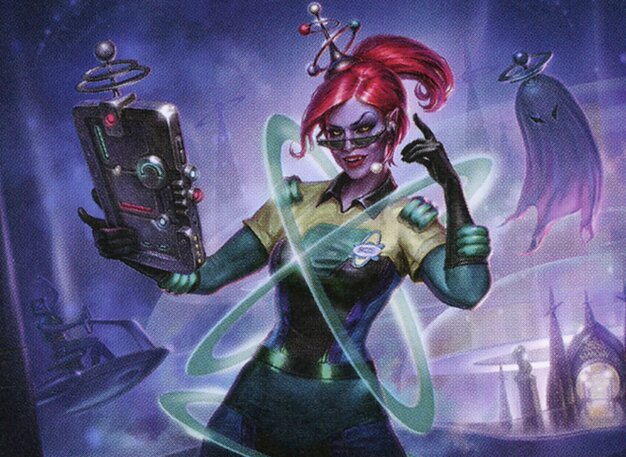This post is not a history of the Alternity RPG, published by TSR/WotC in 1998. It is not a call for TTRPG players to adopt Alternity. (If you want to learn, check out AlternityRPG.net) This post is certainly not about the Kickstarter-funded but still undelivered Alternity 2017 RPG.
Since it’s not any of those things, what, you ask, is this post about? This post briefly covers my experience with Alternity, compares its core mechanic to D&D, and explores what we can take from the system to make our home games better. If you used to play Alternity, or still do, shoot me a message on Mastodon @[email protected]
From here to Alternity, my experience with the system
Twenty years ago, I was kicking around Santa Fe, New Mexico studying classics. One of my classmates ran a 3E D&D game that I played in from time to time. One day he showed me the rule book for another system called Alternity. I recall him highlighting to me that the system only used the platonic solids for dice, no d10. He let me borrow the rulebook plus the Dark*Matter campaign setting so I could run pulpy adventures set in the 20s with a side of Cthulhu. I ran a single adventure based on Lovecraft’s At the Mountains of Madness under the Alternity rules.
Later, I picked up copies of the Alternity core books for myself. My brother and I ran games for each other and some friends. We made up all kinds of settings using the Alternity rules. I ran a campaign set in a not-too-distant future in which humanity colonized Mars and made first contact with a marooned group of Fraal who worshiped Elvis Presley. My brother ran a Dark*Matter campaign in which an immortal Richard Nixon influenced world events through a shadowy cabal. We ran even sillier short adventures in various settings: Far future (space punk), Old West (cattle punk), Feudal Japan (Bushido punk), and Paleolithic (cave punk).

Alternity’s core resolution mechanic
Ah, skill checks. Like 3E D&D, Alternity jettisoned multitudinous calculation tables of 2E AD&D in favor of a core resolution mechanic. We can even think of Alternity as a dark mirror of 3E. It represents another possible path forward from 2E AD&D from the minds at TSR/WotC.
Instead of rolling against a Difficulty Class, players have their target numbers right on their character sheet. Instead of setting a DC, the GM decides how many steps of difficulty or ease modify the skill check. Let’s use the analogy of a skill check as jumping over a bar. In modern D&D, the GM decides how high the bar is. In Alternity, the GM decides how much weight the character carries over the bar.
So, what does this look like in practice? Sticking to our analogy, suppose your character is participating in some goodwill games on a distant planet and is doing the high jump. Your character, Jumping Joe, is a human with 12 Strength. As a human Joe has the Athletics broad proficiency for free. Joe could use this broad skill proficiency to attempt any feat of athleticism. In addition to the Athletics broad skill, Joe has two ranks in the specialty skill. Joe isn’t called Jumping Joe for no reason, after all.
On Jumping Joe’s character sheet, the skills would be recorded as:
| SKILLS | RANK | SCORE |
| STR | ||
| Athletics | 12/6/3 | |
| Jump | 2 | 14/7/3 |
Those numbers in slashes are the target numbers a player must roll for an Ordinary, a Good, or an Amazing result. Alternity usually abbreviates this O/G/A. Hold the phone, you might be saying, why is the target number for an Amazing result lower than an ordinary result? Oh, did I forget to mention? In Alternity you’re trying to roll low numbers on skill checks. Nat one, baby!
A skill’s Ordinary target number is derived from the corresponding ability (Strength, Dexterity, Constitution, Intelligence, Will, and Personality) plus the skill rank. The Good target number is half of Ordinary and Amazing is half of that, rounded down each time.
So, we know how good Jumping Joe is at jumping in a sort of abstract sense. How do we put this to use so that Joe can put on a good show at the galactic goodwill games? The GM first needs to decide how many steps of difficulty (or ease) Joe faces in performing a high jump. The GM decides the task presents a moderate challenge (+2 steps) and that the planet’s high gravity adds another step for a total of +3 steps. To see how Joe does in the high jump you roll the Control Die (d20) + the Situation Die (d8). Remember you’re trying to roll low.
You roll a 9 + 3, 12, an Average result. Joe clears the bar but doesn’t wow the alien hosts.
Ability scores, not modifiers
Alternity has ability scores like D&D, however as we saw its core mechanic directly uses those ability scores. 3E D&D took a different path–a path which D&D is still on–in which an ability score generates a modifier which we use for all kinds of things related to that ability. 5E D&D only uses ability scores directly in a few places. Long jumping, for instance, moves characters a number of feet equal to their strength scores.
What’s with these steps?
Alternity’s core resolution mechanic is built around ability scores, skill points, and difficulty steps. Steps move up the polyhedral dice, skipping the d10 because Alternity doesn’t use it. One step is a d4, two steps a d6, and so on until we reach a d20 at five steps. An easier task has negative steps while a harder task as positive steps.
Page 33 of the Alternity Gamemaster Guide has a straightforward table which gives narrative descriptions of the difficulty steps:
| Control Die + Situation Die | Difficulty Level | Average Roll |
| d20+3d20 | Nearly Impossible | 42 |
| d20+2d20 | Gargantuan | 31.5 |
| d20+d20 | Grueling | 21 |
| d20+d12 | Formidable | 17 |
| d20+d8 | Challenging | 15 |
| d20+d6 | Hard | 14 |
| d20+d4 | Tough | 13 |
| d20+d0* | Average | 10.5 |
| d20-d4 | Easy | 8 |
| d20-d6 | Very Easy | 7 |
| d20-d8 | Extremely Easy | 6 |
| d20-d12 | Cakewalk | 4 |
| d20-d20 | No Sweat | 0 |
The table is reminiscent of the Typical Difficulty Classes table of the SRD 5.1 (CC-BY-4.0):
| Task Difficulty | DC |
| Very Easy | 5 |
| Easy | 10 |
| Medium | 15 |
| Hard | 20 |
| Very Hard | 25 |
| Nearly Impossible | 30 |
You’ve got your difficulty steps table and the core resolution mechanic. You’re set to go, right? An adventure will just call for difficulty steps instead of DCs, right? I’m afraid not. There are all kinds of things that can add or reduce the difficulty steps.
Alternity may have an elegant resolution mechanic that incorporates degrees of success, but figuring out steps is where it gets sticky. Many skills have their own tables for calculating steps. Add to that environmental conditions, character features, and equipment which can all modify the number of steps for a skill check.
There are so many ways to add steps that a GM can always find a reason to make a roll harder or easier for the players. If there’s one area that a game of Alternity can really slow down, it’s trying to decide how many steps to add to a roll. I recall expending much breath justifying my difficulty steps to players.
But wait, it gets crunchier
In Alternity practically everything has an Ordinary, a Good, and an Amazing attribute. A hacker may be attempting to break into a Good mainframe from their Ordinary desktop using an Amazing break-in program. Weapons have three damage values which they do depending on if a player gets an Ordinary, a Good, or an Amazing result on their attack roll. Speaking of damage, it comes in three flavors: stun, wound, and mortal.
Suffice to say, there is plenty of crunch in Alternity. While I used to love the seemingly endless dive into rules, for me today Alternity has way too much crunch. I like 5E D&D because I feel the mechanics effectively support a shared narrative between players and GM. Even so, I tend to simplify mechanics where I can. Beyond D&D, I like rules-light systems that focus on narrative.
What can we take from Alternity?
While it may seem that I just spent a thousand words bashing Alternity, I am quite fond of the system. I preferred it over 3E D&D and I’d probably still play a homebrewed rules-light version of it if there weren’t systems that fit me better. So, what do I think we can take away from Alternity?
Try adding dice as modifiers instead of static numbers. We all love dice, right? Alternity’s control die + situation die mechanic gets swingier as steps increase. That means any difficult action is always a gamble in Alternity. D&D tends to add flat bonuses and players can control chances of failure to such a degree that GMs may be tempted to inflate DCs to challenge the characters. 5E D&D does have some ways for players to add dice d20 rolls, most notably with bardic inspiration, but maybe we can use more. For instance, the party finds a weapon from a long extinct magical civilization. The weapon adds a d4 to hit and damage instead of a flat +2. This feels a little unpredictable, fitting for a poorly understood relic.
Try alternatives to hit points. You might like it. Hit Points are an abstraction that D&D players have lived with since ancient days. At their best, Hit Points give players and GMs a common currency for expressing danger, but they can get ridiculous. Rules as written, a level 10 dwarf barbarian with high CON can easily survive a fall from any height. For all it shares with D&D, Alternity tracks damage quite differently. Characters can take an amount of stun, wound, and mortal damage based on their constitution. This means something that is dangerous to a low-level character, say being shot, is pretty much just as dangerous to a high-level character. Alternity does this because it fits the “simulationist” nature of the rules, but some narrative systems do something similar. For instance, Blades in the Dark by John Harper uses levels of harm to track physical damage to characters. If you’re making a lightweight system for your home game, consider jettisoning Hit Points.
Try degrees of success. You don’t need to get crunchy like Alternity to do degrees of success. If a character succeeds a DC by 10, consider having something extra special happen. I usually do this for investigation rolls. I set a low DC to find something but have a character find more the better they do on the roll.
I hope you enjoyed this trip in the TTRPG way back machine. Next post I’m going to reflect on a one-on-one session that I ran for my spouse while on a backpacking trip. How many hexes did we cover before making camp? Did we roll a random encounter? Until then, if you have thoughts you’d like to share with me about Alternity or any other TTRPG close to your heart, please message me on Mastodon @[email protected]
Feature Image “Monoxa, Midway Manager” by Igor Grechanyi copyright 2022 Wizards of the Coast
Photo of Alternity Book covers taken by me. Alternity cover art by rk post copyright 1998 Wizards of the Coast

